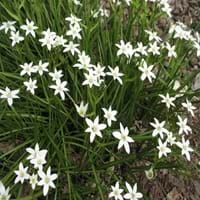Life Span
Perennial
Perennial
Type
Bulb or Corm or Tuber
Bulb or Corm or Tuber
Origin
South America
Eastern Europe, Southern Europe, Turkey
Types
Pamianthe cardenasii , Pamianthe parviflora , Pamianthe peruviana
Not Available
Number of Varieties
Not Available
Habitat
All sorts of environments
Cultivated Beds, meadows
USDA Hardiness Zone
8-10
5-8
Habit
Clump-Forming
Clump-Forming
Flower Color
White
White, Light Green, Silver
Flower Color Modifier
Bicolor
Bicolor
Fruit Color
Green
Not Available
Leaf Color in Spring
Dark Green
Green
Leaf Color in Summer
Light Green
Light Green
Leaf Color in Fall
Several shades of Green
Several shades of Green
Leaf Color in Winter
Light Green
Light Green
Leaf Shape
Strap shaped
Oblong-lanceolate
Plant Season
Spring, Summer, Fall
Spring
Sunlight
Partial Sun, Partial shade
Full Sun, Partial Sun, Partial shade
Type of Soil
Loam, Sand
Clay, Loam, Sand
The pH of Soil
Acidic, Neutral, Alkaline
Acidic, Neutral, Alkaline
Soil Drainage
Average
Well drained
Bloom Time
Spring, Late Spring, Early Summer, Summer, Late Summer
Early Spring, Spring
Tolerances
Drought
Drought
Where to Plant?
Ground, Pot
Container, Ground, Pot
How to Plant?
Offsets
Seedlings
Plant Maintenance
Medium
Medium
Watering Requirements
Keep the ground moist but not water-logged
Average Water Needs
In Summer
Lots of watering
Lots of watering
In Spring
Moderate
Moderate
In Winter
Average Water
Average Water
Soil pH
Acidic, Neutral, Alkaline
Acidic, Neutral, Alkaline
Soil Type
Loam, Sand
Clay, Loam, Sand
Soil Drainage Capacity
Average
Well drained
Sun Exposure
Partial Sun, Partial shade
Full Sun, Partial Sun, Partial shade
Pruning
Pinch or prune as they grow to promote branching and bushiness, Remove damaged leaves, Remove dead branches, Remove dead leaves, Requires little pruning
No pruning needed
Fertilizers
All-Purpose Liquid Fertilizer, High phosphorus
Water soluble fertilizers
Pests and Diseases
Leaf spot, Mosaic viruses
No serious insect or disease problems
Plant Tolerance
Drought
Drought
Flower Petal Number
Single
Single
Foliage Texture
Coarse
Medium
Foliage Sheen
Glossy
Glossy
Attracts
Bees, Birds, Bumblebees, Butterflies, Hummingbirds, pollinators
Insects
Allergy
Unknown
Dermatitis, Poisonous to grazing animals
Aesthetic Uses
Beautification, Bouquets, Ornamental use, Showy Purposes
Beautification, Showy Purposes
Beauty Benefits
No Beauty Benefits
Not Available
Environmental Uses
Air purification
Air purification
Medicinal Uses
No Medicinal Use
Certain forms of cancer, Homeopathy
Part of Plant Used
Not Available
Root
Other Uses
Beneficial species for attracting pollinators, Decoration Purposes
Used As Food
Used As Indoor Plant
No
Yes
Used As Outdoor Plant
Yes
Yes
Garden Design
Bog Garden, Container, Feature Plant, Foundation, Mixed Border, Water Gardens
Alpine, Container, Mixed Border, Rock Garden / Wall
Botanical Name
HYMENOCALLIS longipetala
ORNITHOGALUM balansae
Common Name
Peruvian Daffodil, Spiderlily
Star-of-Bethlehem
In Hindi
peruvian daffodil
Star-of-Bethlehem
In German
peruvian daffodil
Stern -of- Bethlehem
In French
peruvian daffodil
Star- de - Bethléem
In Spanish
Pamianthe
Estrella de Belen
In Greek
peruvian daffodil
Star- of- Βηθλεέμ
In Portuguese
peruvian daffodil
Star of -Bethlehem
In Polish
peruvian daffodil
Star- of- Betlejem
In Latin
peruvian daffodil
Star of Bethlehem ,
Phylum
Magnoliophyta
Magnoliophyta
Class
Liliopsida
Lilopsida
Order
Asparagales
Liliales
Family
Amaryllidaceae
Asparagaceae
Genus
Pamianthe
Ornithogalum
Clade
Angiosperms, Monocots
Angiosperms, Monocots
Tribe
Clinantheae
Ornithogaleae
Subfamily
Amaryllidoideae
Ornithogaloideae
Number of Species
Not Available
Season and Care of Peruvian Daffodil and Star-of-Bethlehem
Season and care of Peruvian Daffodil and Star-of-Bethlehem is important to know. While considering everything about Peruvian Daffodil and Star-of-Bethlehem Care, growing season is an essential factor. Peruvian Daffodil season is Spring, Summer and Fall and Star-of-Bethlehem season is Spring, Summer and Fall. The type of soil for Peruvian Daffodil is Loam, Sand and for Star-of-Bethlehem is Clay, Loam, Sand while the PH of soil for Peruvian Daffodil is Acidic, Neutral, Alkaline and for Star-of-Bethlehem is Acidic, Neutral, Alkaline.
Peruvian Daffodil and Star-of-Bethlehem Physical Information
Peruvian Daffodil and Star-of-Bethlehem physical information is very important for comparison. Peruvian Daffodil height is 61.00 cm and width 61.00 cm whereas Star-of-Bethlehem height is 10.20 cm and width 12.70 cm. The color specification of Peruvian Daffodil and Star-of-Bethlehem are as follows:
Peruvian Daffodil flower color: White
Peruvian Daffodil leaf color: Dark Green
Star-of-Bethlehem flower color: White, Light Green and Silver
- Star-of-Bethlehem leaf color: Green
Care of Peruvian Daffodil and Star-of-Bethlehem
Care of Peruvian Daffodil and Star-of-Bethlehem include pruning, fertilizers, watering etc. Peruvian Daffodil pruning is done Pinch or prune as they grow to promote branching and bushiness, Remove damaged leaves, Remove dead branches, Remove dead leaves and Requires little pruning and Star-of-Bethlehem pruning is done No pruning needed. In summer Peruvian Daffodil needs Lots of watering and in winter, it needs Average Water. Whereas, in summer Star-of-Bethlehem needs Lots of watering and in winter, it needs Average Water.





